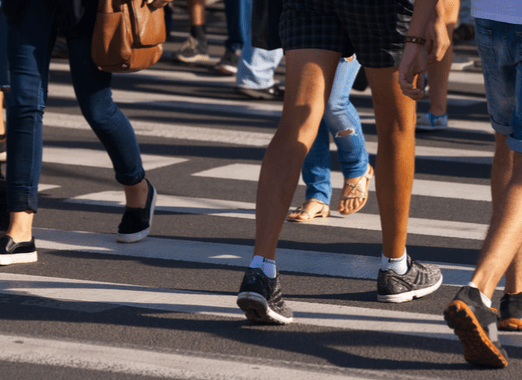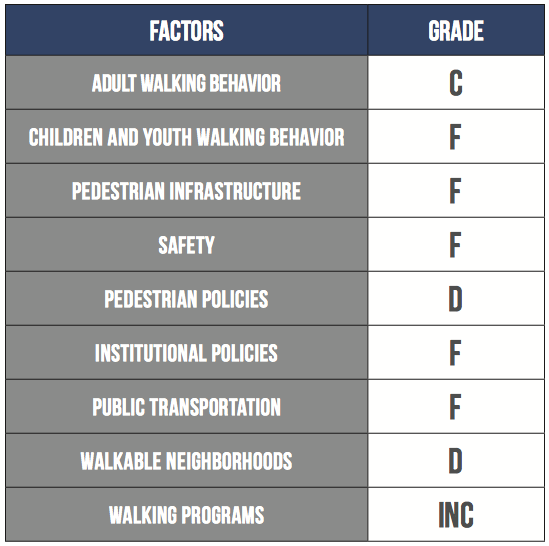States meeting the criteria: Alaska, Montana, Delaware, Vermont, and Rhode Island.
Safety: F
Pedestrian deaths are on the rise in the U.S., with 6,000 fatalities last year, a sad reflection of America's terrible traffic fatality record in relation to peer nations.
While asserting that no pedestrian deaths should be considered acceptable, NPAP set a threshold of 0.75 annual pedestrian deaths per 100,000 people as the baseline for a good safety record. In 2015, the national pedestrian fatality rate was more than twice as high: 1.67 deaths per 100,000 people.
Only four states met the standard, hence the "F" grade. However, the states that did meet the standard tended to be small and sparsely populated, without large urban centers where walking is more common, which highlights the difficulty in assessing pedestrian safety.
States meeting the criteria: Idaho, South Dakota, New Hampshire, and Minnesota.
Transit: F
Walking and transit go hand-in-hand. NPAP cites studies showing that regular transit riders walk more than other people. Places where people can get around by transit tend to be places where walking is convenient too. But transit quality is poor in America, and ridership is abysmally low.
NPAP looked at whether at least 6 percent of commuters in a given state ride transit. The national average is 5.1 percent. Just seven states meet the 6 percent threshold, although a few others -- California, Connecticut, and Pennsylvania -- come close.
States meeting the criteria: New York, New Jersey, Massachusetts, Maryland, Illinois, Washington, and Hawaii.
Walkable Neighborhoods: D
If your neighborhood has sidewalks and you can buy groceries a short distance from home, walking will come a lot more naturally. Most places in America lack these basic ingredients of walkability, however.
NPAP looked for states where at least 30 percent of people live in "highly walkable neighborhoods," as defined by the EPA's Smart Location Database (which factors in population density, intersection density, and other measures). Fewer than a third of states -- just 16 -- meet the 30 percent threshold.
States meeting the criteria: Arizona, California, Colorado, Florida, Illinois, Massachusetts, Nebraska, Nevada, New Jersey, New York, North Dakota, Oregon, Pennsylvania, Rhode Island, Utah, and Washington.






